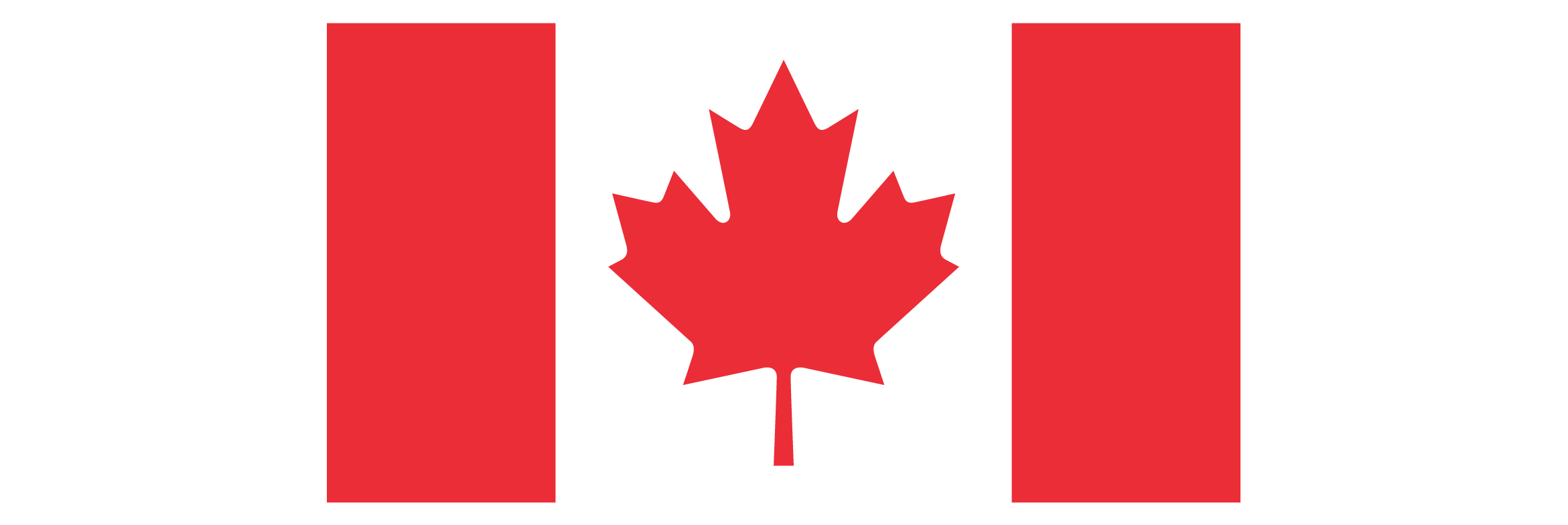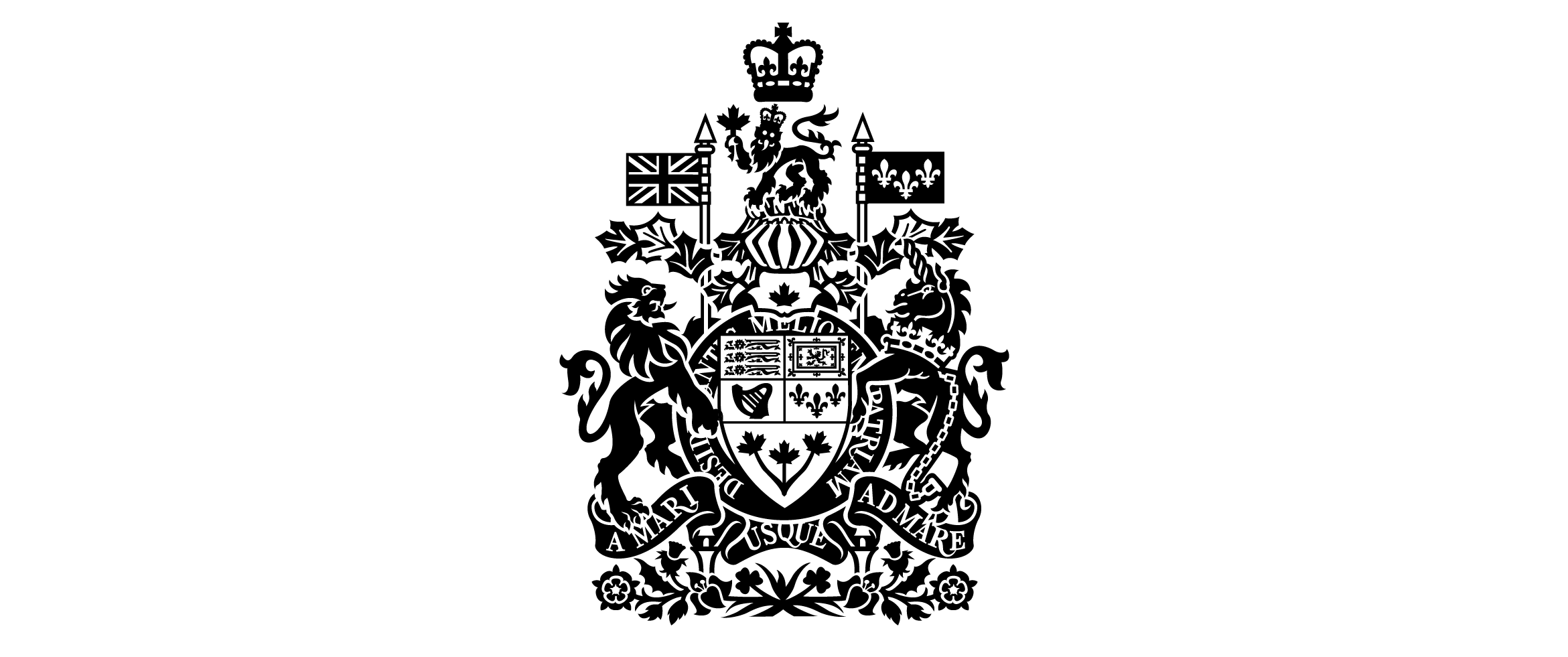Official symbols: Design Standard for the Federal Identity Program
The Government of Canada uses 3 official symbols (see Figure 1) to communicate its identity:
- the Canada wordmark
- the flag symbol
- the arms of Canada
Figure 1. The 3 official symbols of the Government of Canada (from left to right: Canada wordmark, flag symbol, arms of Canada)

Get a copy of the official symbols
To obtain a copy of the official symbols, contact your department’s coordinator.
Contact your FIP coordinatorOn this page
Canada wordmark
The Canada wordmark is the global identifier of the Government of Canada.
The Canada wordmark appears with a corporate signature, in all fields of application.
Canada wordmark design
The Canada wordmark is composed of:
- the word “Canada” in a graphically modified version of the Baskerville typeface (see Figure 2)
- the flag symbol
The Canada wordmark can only be reproduced using the digital master file. Figure 3 shows the distinctive elements of the wordmark.
Figure 2. Canada wordmark: correct and incorrect versions

Figure 3. Distinctive elements of the Canada wordmark

Figure 3 - Text version
The Canada wordmark uses a modified version of Baskerville. In the wordmark, thinner lines of the original typeface have been thickened. The 4 dashed lines indicate the following (starting from the bottom, moving up):
- the baseline
- the x-height line
- the resting line for the flag symbol
- the cap height line
The top serif on the “d” slopes up from left to right at a 3‑degree angle, ending at the cap height line.
The bottom serif on the “d” starts at the baseline and slopes up to the right at an 8-degree angle.
The flag symbol is located above the last “a” in the wordmark. The exact position of the flag symbol in the wordmark is based on the width of one of the bars in the symbol. That measurement is labelled as “x.”
The bottom of the symbol is one quarter of “x” above the last “a” in “Canada.”
The top of the symbol is at the cap height line.
The left bar of the symbol starts at one half of “x” to the right of the letter “d.”
Animated Canada wordmark
The animated version of the Canada wordmark may be used in certain government communications products, for example, videos.
When used, the animated wordmark must always appear in its static form as the final image and must be either:
in black type with the FIP red flag symbol on a white background
or
- in white type with the FIP red flag symbol on a black background (recommended for large scale formats, such as television and cinema advertising)
For details on how and when to use the animated wordmark, see Video ads and Videos.
To obtain a copy of the digital master file of the animated Canada wordmark, contact your department’s FIP coordinator.
Figure 4. The 2 versions of the animated Canada wordmark
Flag symbol
The flag symbol is used in corporate signatures to identify departments, agencies, commissions, boards, councils, and other federal bodies that fall under Schedules I, I.1 and II of the Financial Administration Act, unless they are authorized to be identified by the arms of Canada.
Flag symbol design
The flag symbol is a graphically modified version of the National Flag of Canada.
Figure 5. Flag symbol in FIP red

Arms of Canada
The arms of Canada is used to identify the following officials and departments:
- ministers and their offices
- parliamentary secretaries
- ambassadors
- heads of consulates or missions
- Clerk of the Privy Council
- departments:
- whose heads report directly to Parliament
- that have a quasi-judicial function
Arms of Canada design
The stylized black version of the arms of Canada (see Figure 6) is used in corporate signatures and ministerial signatures. The full-colour version of the arms of Canada must not be used in signatures.
Figure 6. Stylized black version of the arms of Canada

Legal protection of the official symbols
The official symbols, including all design and colour variations, are legally protected against unauthorized use in Canada and abroad under:
- Trademarks Act, subsection 9(1) (Prohibited marks)
- Copyright Act
- Article 6ter of the Paris Convention for the Protection of Industrial Property
For more details, see Legal protection of the official symbols of the Government of Canada.
Creating and using other symbols and logos
This section explains how to create and use logos and symbols other than the official symbols of the Government of Canada.
Other Government of Canada logos
Treasury Board approval is required to:
- add an identifying symbol to a department’s corporate identity
- replace a department’s official symbols
In each instance, a Treasury Board submission is required. For more information, see Rules on the use of logos.
Non-Government of Canada logos
When Government of Canada communications products are part of a formal partnering or sponsorship arrangement with external organizations, the logo of each organization can be displayed. Details on using the logos are covered in the terms and conditions of the agreement.
For more information, see the technical specifications for partnering.
Icons of social media providers
Social media icons can be used when linking to an official social media account or when promoting it. For details, see Using social media icons.